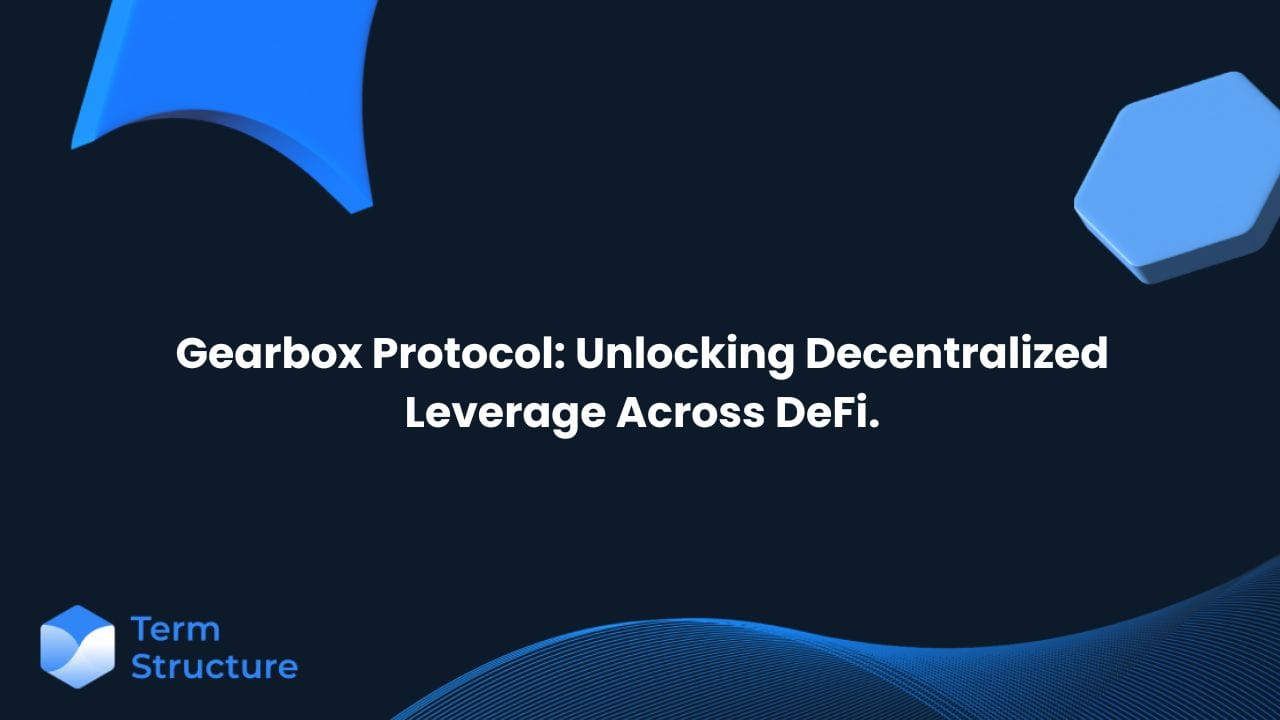Gearbox Protocol: Unlocking Decentralized Leverage Across DeFi.

Introduction to Gearbox Protocol
Gearbox Protocol is a decentralized lending platform that allows users to leverage assets across a variety of DeFi platforms, such as Uniswap, Curve, and Yearn Finance. What sets Gearbox apart is its composable leverage, enabling users to seamlessly engage in trading, farming, and staking across multiple protocols without being confined to a single ecosystem. This article will explore the platform’s key features, including its Credit Account system, multicall transactions, and governance structure, as well as its real-world applications for DeFi users.
What is Gearbox Protocol?
Gearbox a non-custodial protocol that allows users to leverage their assets across different DeFi platforms like Uniswap, Curve, and Yearn Finance. Its governance is controlled by a decentralized autonomous organization (DAO) to ensure users have a say in the platform’s development. There are two main roles within Gearbox:
- Lenders provide funds in ETH or stablecoins to Gearbox pools to earn passive interest. These funds are used by leveraged users.
- Leverage Users borrow from lender pools to perform leveraged operations such as farming, staking, or trading on various DeFi platforms through composable leverage.
How Composable Leverage Works
Composable leverage allows users to access liquidity across multiple DeFi platforms without being restricted to one ecosystem. For example, users can borrow and trade on Uniswap, farm stablecoins on Curve, or leverage stake through Lido. Gearbox makes this process seamless and efficient to help users increase their investment returns.
Credit Accounts: The Backbone of Gearbox
A Credit Account is an isolated smart contract which contains both the user funds and the borrowed funds. This is where your leverage is. After you open an account, all the operations go through this account and the assets stay on it as well. You can see a Credit Account as your automated leveraged DeFi wallet where you not only keep positions, but can also program it the way you want.
The Credit Account system is a key feature. These accounts are smart contracts that provide leverage to users, allowing them to interact with external DeFi protocols. Each Credit Account is isolated, meaning one user’s risky actions don’t affect others.
Key Benefits:
- Security: Each Credit Account is segregated to protect users from risk.
- Automation: Credit Accounts automate position management, rebalancing, and liquidation.
- Efficiency: Users can engage with multiple DeFi protocols through one interface, streamlining complex strategies.
Important Principles Of Gearbox Protocol
Gearbox Protocol offers several standout features that make it a powerful tool for DeFi users. These features enhance efficiency, flexibility, and cost-effectiveness for both traders and platforms integrating leverage.
Multicall Transactions
Gearbox allows multiple operations to be performed in a single transaction, reducing gas fees and enabling users to execute complex strategies more efficiently.
Smart Router For Optimization
The Smart Router optimizes transaction paths, ensuring users get the best returns in the shortest amount of time.
Permissionless Strategy Execution
Gearbox provides users with complete freedom to implement their strategies without needing approval, offering flexibility in trading, yield farming, and hedging.
0% Funding Rates
Unlike many other platforms, Gearbox does not charge funding fees for leverage, making it an ideal choice for long-term investors.
Leverage As A Service (LaaS)
Gearbox allows other DeFi platforms to integrate leverage positions without needing to build their own infrastructure, improving capital efficiency across the ecosystem.
Governance Structure
Gearbox is managed by the Gearbox DAO, where the community votes on important decisions using the governance token, $GEAR. This ensures the platform evolves based on user input, maintaining a decentralized structure.
Gearbox V3: Expanding Capabilities
The release of Gearbox V3 introduces several key upgrades aimed at enhancing risk management, increasing integration with other DeFi platforms, and improving overall user experience. Let’s dive into some of the major improvements and their implications.
- Pool Segmentation: One of the standout features of Gearbox V3 is pool segmentation, which groups different assets into separate pools based on their risk profile. This segmentation allows for better risk management as it isolates the potential risks associated with each asset type. By categorizing assets, lenders and borrowers can interact with pools that match their risk tolerance, making the platform more secure for users on both ends.
- Additional Protocol Integrations: Gearbox V3 expands its list of integrated protocols, bringing platforms like Convex Finance and Balancer into the fold. These integrations allow users to access a wider variety of DeFi services, from yield farming to liquidity provisioning, without leaving the Gearbox ecosystem. With more protocol options, users have greater flexibility in customizing their strategies and maximizing returns.
- Improved Risk Management: In V3, Gearbox has introduced more robust risk management tools to help both lenders and borrowers protect their positions. These tools include enhanced liquidation mechanisms, more detailed reporting on user positions, and greater control over leverage levels. This upgrade is particularly important in volatile markets, as it helps users mitigate the risk of liquidation and manage their exposure more effectively.
Applying Gearbox in Real-Life Scenarios
Gearbox’s versatile platform can be applied across various DeFi strategies, offering users opportunities to maximize returns and manage risks more effectively. Here are a few practical examples of how Gearbox can be used in real-life scenarios.
Margin Trading on Uniswap
Gearbox enables users to leverage up to 10x on Uniswap while retaining ownership of their assets. This allows experienced traders to amplify their positions and potentially increase their profits without needing to liquidate their holdings. enables users to leverage up to 10x of their trade capital to trade using other people’s money in the platform but retain ownership of their assets. This feature can indeed come in handy for highly experienced traders who are willing to supercharge their market stance.
Leverage Farming on Curve
By using leverage, users can farm liquidity on Curve Finance and boost their returns without committing their full capital. This strategy is ideal for users who want to maximize yield generation while maintaining a smaller upfront investment.
Leverage Staking on Lido
Gearbox allows users to leverage their staking on Lido, increasing the staking rewards on ETH without needing to invest larger sums of tokens. This is particularly beneficial for long-term ETH holders looking to earn more with their existing holdings.
Delta-Neutral And Hedging Strategies
For advanced users, Gearbox’s multicall capabilities enable the execution of delta-neutral and hedging strategies across multiple DeFi platforms. These strategies help minimize risk while taking advantage of market opportunities, allowing users to protect their positions from volatility while still generating returns.
Conclusion
Gearbox Protocol offers a robust and versatile platform for both passive and active DeFi participants. With features like composable leverage, Credit Accounts, and multicall transactions, Gearbox unlocks new possibilities in the DeFi space. Governed by a DAO and designed for flexibility, it is poised to be a key player in the future of decentralized finance.
For more details, check out Gearbox’s official documentation.

